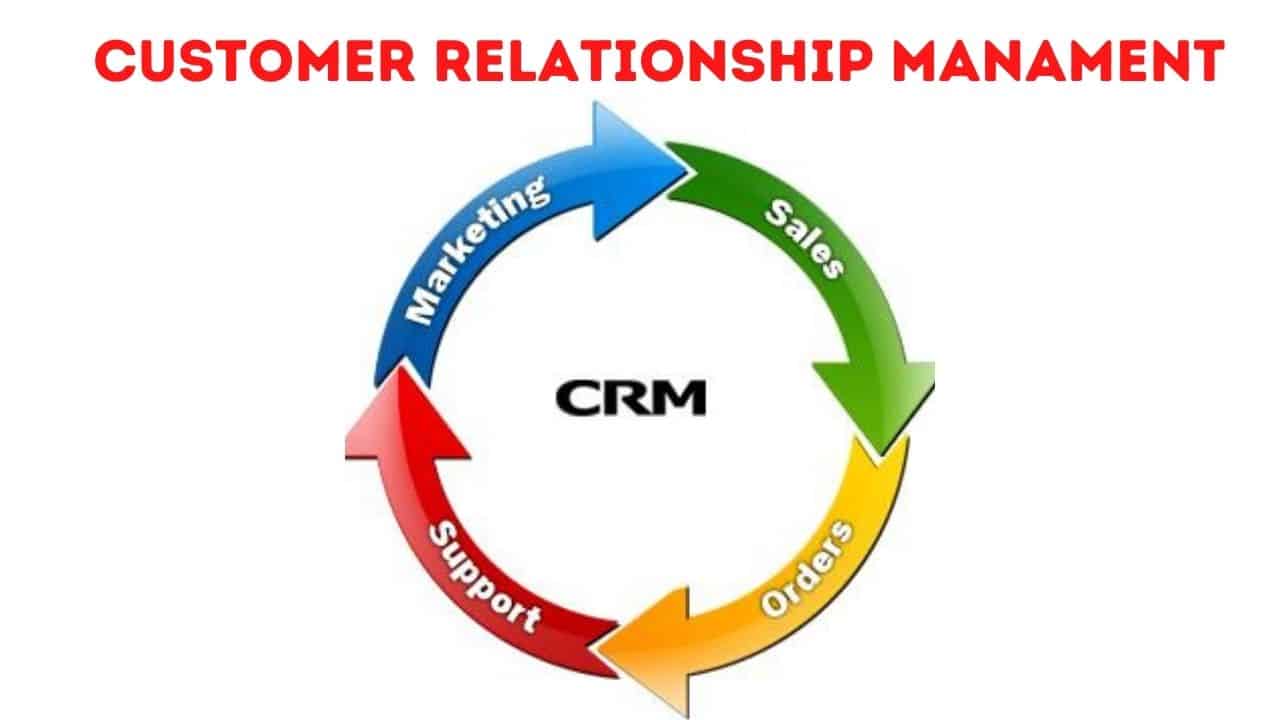Today’s consumers expect a personalized customer experience for them as individuals. To meet those expectations, you need to establish a Customer Relationship. This will help you to understand what your audience wants and needs, and you need to understand how to better meet those needs than the competition.
What is Customer Relationship Management (CRM)?
Customer Relationship Management (CRM) refers to the principles, practices, and guidelines that a company follows when interacting with its customers. From the company’s point of view, this whole relationship includes direct interactions with customers, such as sales and service-related processes, forecasts, and analysis of trends and customer behavior.
Types of Customer Relationship Management (CRM) Technology
CRM software
Dedicated CRM software consolidates customer information in one place to give businesses easy access to data such as contact details, purchase history, and previous contacts with customer service representatives. This data helps employees interact with customers, anticipate their needs, identify customer updates, and track performance goals when it comes to sales.
The main goal of CRM software is to make interactions more efficient and productive. Automated processes within a CRM module include sending marketing materials to the sales team based on the customer’s selection of a product or service. The programs also assess a client’s needs to reduce the time it takes to fulfill an application.
CRM solutions in the cloud
Cloud-based systems make real-time data available to sales staff in the office and on site, as long as a computer, smartphone, laptop or tablet is connected to the Internet. Such systems provide better access to customer information and eliminate the sometimes complicated installation process associated with other CRM products or software.
However, the convenience of this type of system has a trade-off. When a business closes or faces an acquisition, access to customer information can be compromised. A company may have compatibility issues when migrating to another vendor for this type of software. Cloud-based CRM programs often cost more than in-house programs.
Human management and artificial intelligence CRM
All the computer software in the world to support CRM means nothing without proper management and decision-making by humans. Also, the best programs organize the data so that people can easily interpret it and use it to their advantage. For CRM to be successful, organizations must learn to identify useful information and redundant data and to classify duplicate and incomplete records that can provide employees with inaccurate information about customers.
What are the Phases of Customer Relationships?
- Awareness
- Exploration
- Expansion
- Commitment & Dissolution
Customer Relationship Management Tools
Here are some major CRM tools
#1. Email Marketing
When CRM is integrated with various email marketing tools, it offers potential customers direct, personalized marketing contact.
Using CRM, businesses can gather information in one place, including demographic information, purchase history, personal interests, and any previous brand interactions that can be used to create a personalized message for great recipient engagement. The main goal of integrating CRM is to come first with customers. CRM also tracks email performance in real-time.
The sales team can receive an automatic notification when the recipient is opened or respond to this email. Real-time results allow the sales team to easily make changes to the templates over time. When CRM is integrated with various email marketing tools, you also get the exact ROI of the email marketing activities.
By combining social data with CRM data, the customer face is expanded with centralized information. That way, you can see a customer’s interaction with your brand on each channel and get an inside look at them. You can easily reach your prospects through social media. However, when combined with CRM, your efforts have been combined to track activity with different keywords.
Social media with CRM not only focuses on the new customer, but also promotes relationships with existing customers. Discover potential customers using keywords and hashtags. This is the best way to be in the spotlight. You can use it to track industry keywords with the best used hashtags. This makes it easy for you to reply to your customers on the platform of their choice.
Via Social CRM, your social media manager can provide targeted content, offer targeted offers and help to obtain comprehensive audience data. Social media with CRM strengthens customer relationships with your brand.
#3. Messaging
The CRM messaging service helps in connecting with the target audience and provides them with relevant services. You can automatically remind your customers of upcoming offers, events, etc. CRM with messaging service helps to achieve various organizational goals, such as
- High level of customer service
- Reduces operating costs
- A gain in marketing-relevant data
- Customer loyalty
You can send SMS to your customers about product tracking notifications, loyalty text messages, and free incentives (vouchers) to help your company develop products and services accordingly. By using CRM with SMS service, both client agents can keep up with the lead process.
According to the Gartner report, it has been observed that text messages are opened and response rates are above 98% while email marketing is hitting the 20% mark.
#4. Telephony
Phone software and CRM software are efficient for your business. However, integrating both is effective and efficient for the company. The integrated CRM accelerates outgoing calls and increases the reach for the potential audience. Your representative can use precise and detailed notes as a weapon that provides superior service to clients.
Satisfied prospects are ready to give feedback, which is easily possible through CRM. You will be asked to dial the numbers according to satisfaction. The sales team receives all the information on the phone screen when the sales team calls the customer, helping to resolve their questions quickly and accurately.
#5. Live chat
Integrating your CRM with a live chat tool will help store information that is carried out in the chatbox. When a visitor requests a chat, CRM automatically collects the information about name, email address and phone number, chat time, and IP location.
When the same visitor arrives, their manager receives the necessary information and greets them. You can easily see all the important information near the chat window. You can have this chat history which is useful when the same visitor is served by different employees.
PEOPLE ALSO SEARCH FOR: BUSINESS-TO-CONSUMER (B2C): Sales Models and Marketing Strategies
Importance of Customer Relationship Management
Customer relationship management is essential because:
- When you link to existing customers, you don’t have to struggle to win them back as new traffic.
- Customer loyalty increases the chances of making multiple purchases, which is why most of these first-time buyers are not limited to just these before they die.
- When you make your customers feel welcome after buying, they will feel loyal to your brand, too.
- Because the brand image was created before it started, customers have something to do or see when they make multiple purchases.
- When you have strong ties and let customers know that they are valued, they become your friends.
- With persistent good customer relationship management, customers will feel compelled or happy to promote your brand to others, and that will make your business successful and consistent.
Customer Relationship Management Process
The steps of the CRM process are a collaboration between the Marketing, Sales, and Support departments. To help you understand how each team works together, we’ll explain how each step works in practice.
#1. Generate brand awareness
The first step in attracting new customers is introducing them to your company. The marketing team usually does this through a number of things:
- Get to know your target group. Marketers do research to identify their target audience’s demographics, interests, preferred communication channels, the messages they respond to the most, and the information that matters to them.
- Segment your target audience. Audience People are created to divide a brand’s audience into similar groups based on similar interests or demographics. This enables marketers to determine what types of people are most likely to become customers and who their campaigns should target.
- Create marketing campaigns that target your target audience. A / B testing is used to determine what is working and what is not, to create unique campaigns for unique customer segments, and to create strategies for lead acquisition.
When it comes to following these steps, a CRM is a wealth of information. The tool can display patterns in leads and previous customers to give marketing teams a clear picture of their target audience. In addition to understanding the demographic similarities, marketers can also analyze the sales notes in their CRM to understand what has resulted in conversions in the past. By understanding the response from potential customers, marketers are better able to create effective campaigns.
#2. Acquire leads
Introducing your brand to a prospect is just the beginning of the CRM process. From there, you should encourage them to learn more about and interact with your company.
Depending on the structure of your company, this lead acquisition step may be the responsibility of the marketing or sales team, or both. For example, your marketing team could encourage website visitors to share their emails with a newsletter subscription CTA or sweepstakes. Sales, on the other hand, could use your CRM to set up live chat on your website. This feature allows your team to proactively reach out to potential customers who come to your website.
If your CRM is armed with a lead enrichment tool like Reach, lead acquisition is incredibly easy. The tool only needs a potential customer’s email address to instantly receive detailed information about the person. With this data, you can tailor your reach to the prospect to start the relationship on the right note. Not to mention, you can save a lot of time by not having to look for leads yourself.
#3. Convert leads into customers
You have successfully dealt with your potential customers and they are interested. Now is the time to convert those leads into customers.
To do this, salespeople first need to know how interested potential customers are, and specifically, whether they are interested enough to make a purchase. A CRM is very useful here. Historical data from previous successful sales can be used to identify criteria for lead qualification. These criteria can be added as “attributes” to your CRM’s lead scoring tool to help employees identify opportunities with the highest likelihood of a sale.
When prospects are likely to make a purchase, employees should be able to take better care of them and build their trust enough to make a purchase.
What Does a CRM System Cost?
CRM pricing is determined by the size of the company, the platform’s functionality, the number of users, and the software vendor. Fees for setup and implementation might range into thousands of dollars. CRM is often invoiced per user per month, with prices ranging from $15 to $300 or more per user per month depending on the complexity of the implementation.
How Do Companies Decide Which CRM to Use?
Because there are various CRM platform suppliers today, picking a CRM comes down to cost, support, and capability. That is, you want the most bang for your buck and don’t want to waste money on features you won’t utilize. Create a budget based on your company’s goals, and then choose the features or functions you require. Then, shop about and read consumer evaluations and feedback from vendors.
We Also Recommend:
- 30 Most Searched Customer Service Skills (full details)
- 15 Best Customer Retention Strategies That Increases Profits (guide)
- Relationship Marketing: The A-Z Guide (+ Free Tips)
- How to gain customer loyalty. [8 easy ways + case study]
- 30 Most Searched Customer Service Skills (full details)
- MASS MARKET: The Ultimate Guide







1 comment
I learned lot of things from this content about CRM. Article is nicely structured and written.